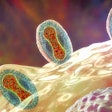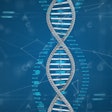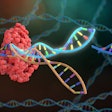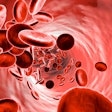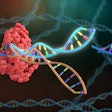
Researchers have developed a dual CRISPR-Cas3 gene editing technique to restore dystrophin function in induced pluripotent stem cells (iPSCs) from patients with Duchenne muscular dystrophy (DMD).
DMD is a hereditary degenerative neuromuscular disorder caused by mutations affecting the dystrophin gene. DMD is comparatively rare and invariably fatal; patients with DMD generally die in their 20s or 30s.
Writing in the journal Stem Cell Reports, the research team, led by Yuto Kita of Kyoto University in Japan, explained that their approach was effective because it removed large sections of the dystrophin gene, allowing the cells to skip faulty or misaligned sections of the genetic code, thereby yielding truncated but still functional proteins for a wide variety of mutation patterns associated with DMD.
Because the mutation patterns that affect the dystrophin gene vary widely, deleting a small section of the gene -- mono exon skipping -- can only be used for a limited number of DMD patients in each instance. For example, the researchers pointed out that the most common mono exon skipping of exons 51, 53, and 45 can be applied to only 13%, 8%, and 8% of DMD patients, respectively.
In contrast, multi exon skipping (MES) is applicable to a wider range of DMD mutation patterns. As the exons in the 45 to 55 range are commonly affected in DMD mutation patterns, MES using this range of exons could be applicable to more than 60% of DMD patients. However, there are few techniques available that can induce a deletion large enough to cover these mutation hotspots, which spread over at least 344 kilobases.
To tackle this issue, the team used CRISPR-Cas3 to induce large deletions in the 45 to 55 exon region in a range of DMD mutation patterns. Because a deletion of more than 100 kb using a single CRISPR RNA (which aids in targeting the correct DNA segment) has only rarely been observed, the researchers opted to inwardly sandwich the target genomic region using a pair of CRISPR RNAs: the dual CRISPR-Cas3 technique.
“Overall,” the researchers wrote, “these results demonstrated that the dual-Cas3 system was able to induce the genomic MES in DMD iPSCs with various mutations and restored dystrophin protein, emphasizing the broad applicability of our dual-Cas3 strategy.”
The authors noted the potential limitations of their method. There is variation in the deletion pattern, and the exact start and end points of the deletion cannot be controlled with precision.
While this limitation could be a drawback when a large but precise deletion is required, it is less of an issue with DMD because the target exons are separated by large intron sequences averaging 28 kb in length. Additionally, the authors suggest that methods to improve the overall MES induction and genome editing efficiency of the Cas3 system should be developed. Furthermore, the study did not demonstrate the functionality of the recovered dystrophin protein, e.g., interaction with the dystrophin-associated protein complex.
The research team sees potential for the method not only for the treatment of DMD but also for other conditions.
“Dual CRISPR-Cas3 is a promising tool to induce a gigantic genomic deletion and restore dystrophin protein via multi-exon skipping induction,” senior author Akitsu Hotta of Kyoto University said. “We expect this study to enlighten new ways to treat DMD patients and other genetic disorders that require extensive deletions.”












